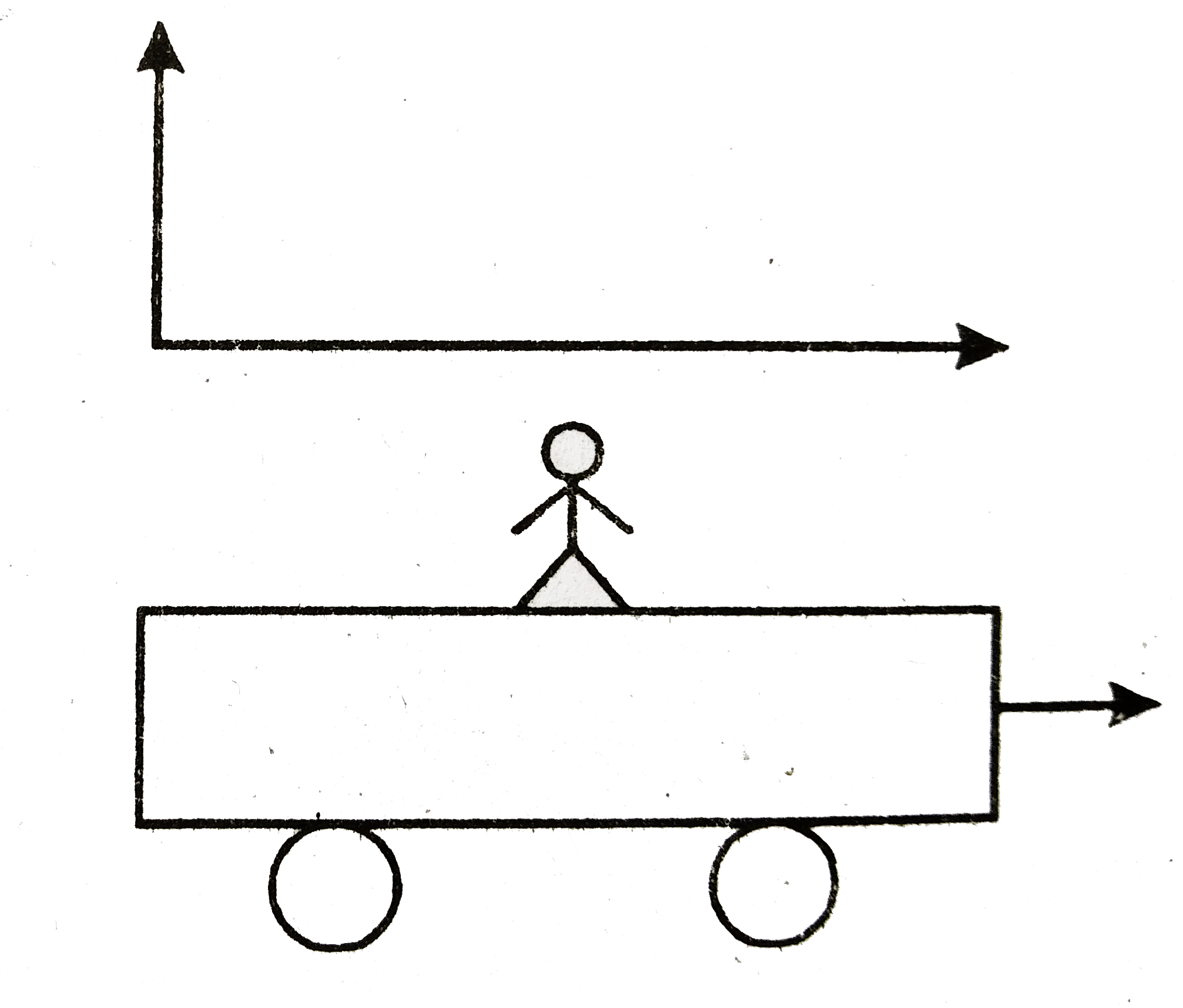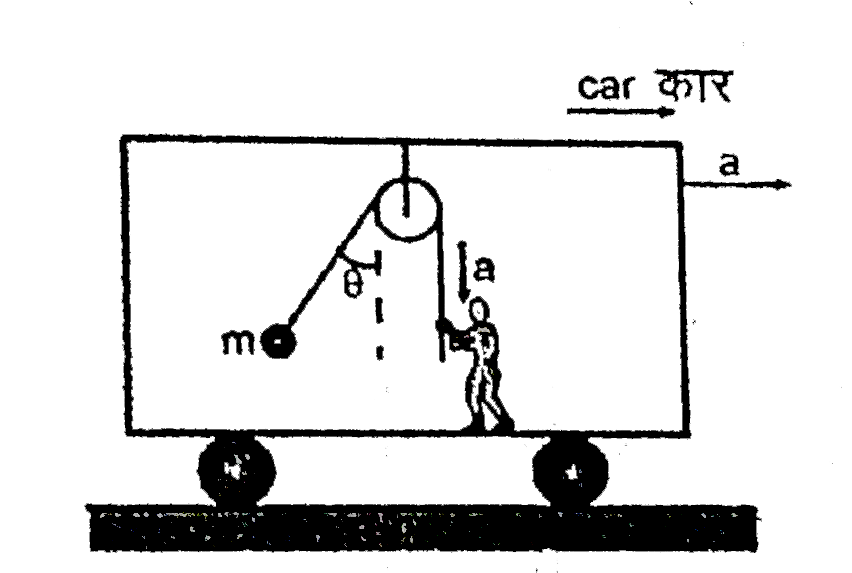A boy standing on a long railroad car throuws a ball straight upwards. The car is moving on the horizontal road with an acceleration of 1ms2 and the projectioon velocity inte vertical direction is 9.8 m/s. How far behind the boy will the ball fall on the car?
Let the velocity of car be u, whne the ball is thrown.
Initial velocity of car = Horizontal velocity of ball.
Distnce travelled by ball B,
Sb=ut (in horizontal direction)
Extra distance travelled by car
=Sc−Sb
=12at2

Ball can be considered asd a projectile having
θ=900
t=2usinθ6<br>=(2xx9.8)/9.8= 2 sec<br>:. S_c-S_b= 1/2 at^2 = 1/2 (1) 2^2= 2m
Hence, the ball will drop 2 m behind the boy.
Topper's Solved these Questions
- REST AND MOTION : KINEMATICSBOOK - HC VERMACHAPTER - REST AND MOTION : KINEMATICSEXERCISE - Objective 2
10 Videos
- PHYSICS AND MATHEMATICSBOOK - HC VERMACHAPTER - PHYSICS AND MATHEMATICSEXERCISE - Exercises
34 Videos
- ROTATIONAL MECHANICSBOOK - HC VERMACHAPTER - ROTATIONAL MECHANICSEXERCISE - Exercises
86 Videos
Similar Questions
A man standing on a long rail road car throws a ball vertically upward with speed 20m/s. The car starts from rest and moves with acceleration 2m/s2. How far behind the man will the ball fall on the car ?
View SolutionA car is standing 800 m behind a bus, which is also at rest. The two start moving at the same instant but the different forward accelerations. The bus has acceleration 4m/s2 and the car has acceleration 8m/s2. The car will catch up with the bus after a time of:
View Solution
Knowledge Check
In the previous problem if the car is moving with a constant acceleration of 2m/s2, the ball will fall behind the person at a distance
A32mB64mC96mD16mA boy throws a ball upward with velocity v0=20m/s. The wind imparts a horizontal acceleration of 4m/s2 to the left. The angle θ at which the ball must be thrown so that the ball returns to the boy's hand is : (g=10ms−2)
Atan−1(1.2)Btan−1(0.2)Ctan−1(2)Dtan−1(0.4)A car is standing 100 m behind a bus. The bus and the car both start moving simultaneously with acceleration of 4m/s2 and 2m/s2 respectively. Find the time after which the car will be able to catch the bus.
A10 sB20 sC15 sDnone
A ball falls from a height of 5 m and strikes a lift which is moving in the upward direction with a velocity of 1ms−1, then the velocity with which the ball rebounds after collision will be
View SolutionA car travelling along a road begins accelerating with a constant acceleration of 1.5m/s2 in the direction of motion. After travelling 392 m at this acceleration, its speed is 35 m/s. Determine the speed of the car when it began accelerating.
View SolutionA car is going east wards with a velocity of 8m/s. To the passengers in the car, a train appears to be moving north wards with a velocity of 15 m/s. What is the actual velocity of the train:
View SolutionA boy throws a ball vertically upwards froma moving open car on a horizontal straight road
(i) The ball will fall behind the boy, if car is accelerating
(ii) The ball will fall in front of the boy, if car is decelerating
(iii) The ball will fall in the hands of boy if car is moving with uniform velocity
(iv) The path of ball as seen by the boy will be vertical straight line if car is moning uniformly
(v) The path of ball as seen by observer on ground will be parabola
View SolutionA bob is hanging over a pulley inside a car through a string. The second end of the string is in the hand of a person standing in the car. The car is moving with constant acceleration 'a' directed horizontally as shown in figure. Other end of the string is pulled with constant acceleration 'a' (relative to car) vertically. the

View Solution
